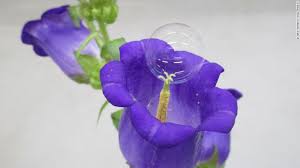
Breaking News
 New battery idea gets lots of power out of unusual sulfur chemistry
New battery idea gets lots of power out of unusual sulfur chemistry
 Next Issue Of The Wild Bunch: AI Threats Patriots Should Prepare For
Next Issue Of The Wild Bunch: AI Threats Patriots Should Prepare For
 A Mortician Explains Why This Photo Doesn't Make Sense
A Mortician Explains Why This Photo Doesn't Make Sense
 Unseen Danger of Wireless Tech
Unseen Danger of Wireless Tech
Top Tech News
 Kawasaki's four-legged robot-horse vehicle is going into production
Kawasaki's four-legged robot-horse vehicle is going into production
 The First Production All-Solid-State Battery Is Here, And It Promises 5-Minute Charging
The First Production All-Solid-State Battery Is Here, And It Promises 5-Minute Charging
 See inside the tech-topia cities billionaires are betting big on developing...
See inside the tech-topia cities billionaires are betting big on developing...
 Storage doesn't get much cheaper than this
Storage doesn't get much cheaper than this
 Laser weapons go mobile on US Army small vehicles
Laser weapons go mobile on US Army small vehicles
 EngineAI T800: Born to Disrupt! #EngineAI #robotics #newtechnology #newproduct
EngineAI T800: Born to Disrupt! #EngineAI #robotics #newtechnology #newproduct
 This Silicon Anode Breakthrough Could Mark A Turning Point For EV Batteries [Update]
This Silicon Anode Breakthrough Could Mark A Turning Point For EV Batteries [Update]
 Travel gadget promises to dry and iron your clothes – totally hands-free
Travel gadget promises to dry and iron your clothes – totally hands-free
 Perfect Aircrete, Kitchen Ingredients.
Perfect Aircrete, Kitchen Ingredients.
 Futuristic pixel-raising display lets you feel what's onscreen
Futuristic pixel-raising display lets you feel what's onscreen
Soap Bubbles Delivered By a Tiny Drone Can Pollinate Crops If Bees Aren't Available, Says Study

Bees and other pollinators like butterflies are essential to farmers who grow flowering crops like fruit orchards and almonds, but with bee populations suffering over the last decade, due to a variety of factors, one innovative researcher in Japan may have found the perfect solution—and the idea came to him while in the park blowing soap bubbles with his son.
Eijiro Miyako, an associate professor at the Japan Advanced Institute of Science and Technology has successfully used soapy bubbles to pollinate a pear orchard by delivering pollen grains to targeted flowers in the most delicate way, utilizing a drone.
The whimsical technique would be much cheaper and more effective than other types of manual pollination, when used in concert with robotic or drone delivery methods.



